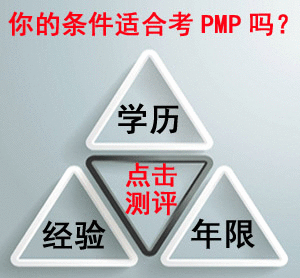PMP考試模擬題(二十一)
|
1. which of the following is referred to as payback period:
a. the number of periods required to recover the initial investment b. the rate of return on the investment c. the number of periods required to bring project cost back to the original budget, based on current performance d. loan payment schedule e. none of the above ans: a 2. which one of the following is not an acquisition method? a. advertising b. invitation c. negotiation d. purchase e. all are acquisition methods ans: a 3. at least _____of the cost of quality are the direct responsibility of management. a. 0.25 b. 0.85 c. 0.5 d. 1 e. 0.33 ans: b 4. fast tracking means to: a. speed up a project through parallel tasks. b. swap one task for another. c. reduce the number of tasks if possible. d. b and c. e. none of the above. ans: a 5. formal written correspondence is mandated in which of the following situations: a. product undergoes casual in-house testing b. client requests additional work not covered under contract c. project manager calls a meeting d. b and c only e. none of the above ans: b 6. the delphi method is _____ . a. used to derive a consensus arriving at a convergent solution b. useful in determining probability relating to future events. c. used with questionnaires based on established scenarios. d. continued as an iterative process until a solution is reached. e. all of the above. ans: e 7. the positive value of conflict is underestimated. properly managed, conflict is a valuable tool, particularly when a. a diversion is needed b. conflictive situations are in their early stages and emotional involvement is low c. conflictive situations are in their late stages and emotional involvement is high d. conflict may cause a loss of status or position power e.a and c ans: b 8. under the terms of 2/10 net 30, the buyer may: a. deduct 10% of the invoice amount for payment within 30 days b. deduct 2% of the invoice for payment within 10 days c. incurs a penalty on 10% for payments more than 30 days late d. settle the invoice with 2 equal payments; one within 10 days and the other within 30 days e. none of the above ans: b 9. which of the following can result in misinterpretation of the statement of work? a. using imprecise language (i.e. nearly, approximately) b. mixing tasks, specifications, special instructions and approvals c. no pattern, structure or chronological order d. wide variation in the size of tasks or details of work e. all of the above ans: e 10. amount at stake is the _____ . a. function of planned time/real time project costs. b. risk identified in successful project completions. c. (standard project deviation + expected costs)/6 d. cost of investment loss + least cost to restore status quo. e. inherent risk at conception altered by standard project deviations. ans: d 11. in communications management, to assimilate through the mind or senses (as in new ideas) is the process of a. understanding b. communicating c. receiving d. decoding e. comprehending ans: c 12. in general, the best long-lasting approach to settling project conflict is the _____ approach . a. problem solving b. compromise c. withdrawal d. smoothing e. forcing ans: a 13. in which of the following cost estimating techniques are statistics models used: a. nonparametric cost estimating b. parametric cost estimating c. life cycle cost estimating d. bottom-up estimating e. all of the above. ans: b 14. the _____ specification delineates specific end use capabilities which can be tested in the acceptance procedure. a. performance b. functional c. technical d. base line e. operational ans: b 15. the contractual statement of work (csow) a. must be the same as the proposal statement of work b. does not identify reporting requirements c. can be at a different level of detail (i.e. wbs level) than the proposal statement of work d. identifies the contractor's organizational structure for the project e. all of the above ans: c 16. the key ingredient to a successful quality management program are _____. a. management's quality philosophy, operational quality assurance and operational quality control. b. quality evaluation methods and functional quality integrators. c. technical quality administration, the technical quality specifications, and the quality process review. d. quality evaluation methods, quality progress reviews and the technical quality specifications. e. all of the above. ans: a 17. the key purpose of project control is to: a. plan ahead for uncertainties. b. generate status reports. c. keep the project on track. d. develop the project road map. e. all of the above. ans: c 18. cip embodies which of the following principals? a. constancy of purpose b. customer focus and involvement c. total involvement d. teamwork e. all of the above. ans: e 19. excessive flexibility in specifying requirements will _____ the likelihood of time overruns. a. reduce. b. eliminate. c. double d. increase e. not affect ans: d 20. listening involves more than hearing sounds. the good listener a. repeats some of the things said b. finishes the speaker's sentences c. writes everything down d. nods his head frequently ans: a |




